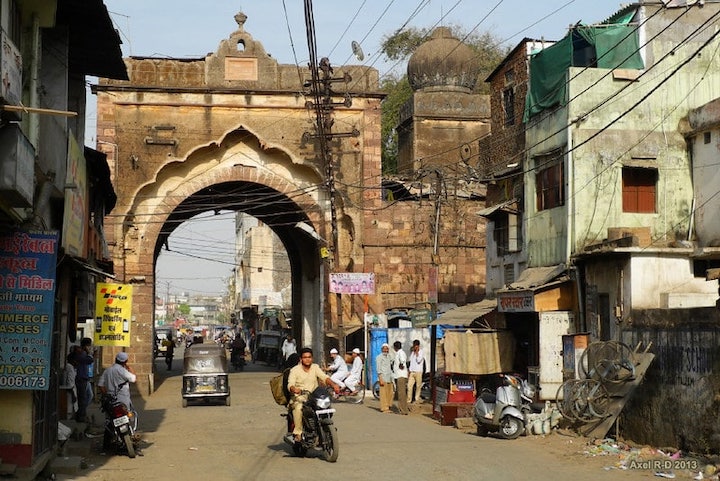Bhopal, the capital city of Madhya Pradesh, has become the first city in India to adopt the localisation of the United Nations-mandated sustainable development goals (SDGs). The adoption of localisation of SDGs is a significant step towards translating Agenda 2030 into local actions and impacts that contribute to the global achievement of the goals. The chief minister of Madhya Pradesh, Shivraj Chouhan, launched an Agenda for Action: Sustainable Urban Transformation in Bhopal on May 12, 2023. This Agenda will enable voluntary local reviews (VLR) that will demonstrate the local government’s capacity and commitment towards achieving sustainable development.
What is SDGs Localisation?
SDGs localisation is a process of translating Agenda 2030 into local actions and impacts that contribute to the global achievement of the goals. The localisation process involves local governments and stakeholders in designing and implementing strategies and actions that are tailored to local contexts. SDGs localisation is essential because it recognises that sustainable development is not a one-size-fits-all approach. Instead, it requires local solutions that take into account the unique challenges and opportunities of each locality.
Bhopal’s VLR
Bhopal’s VLR is the result of a collaboration between the Bhopal Municipal Corporation, UN-Habitat, and a collective of over 23 local stakeholders. The VLR will measurably demonstrate the city’s aspirations for a sustainable and inclusive urban transformation. The review process incorporated a mix of quantitative and qualitative approaches, including qualitative mapping of 56 developmental projects. The VLR will serve as a tool to monitor progress towards achieving the SDGs, identify gaps, and inform decision-making.
Importance of Localisation of SDGs
In 2015, all 193 member states of the UN adopted Agenda 2030, comprising 17 SDGs and 169 targets as a plan of action for people, planet, and prosperity. The member states report their progress towards achieving the goals through a voluntary national review (VNR) to the UN’s high-level political forum (HLPF). However, local and regional governments are increasingly engaging in their own subnational reviews, so-called VLRs, which have proven useful for cities and regions. Cities and regions have a pivotal role in achieving Agenda 2030 as at least 60 per cent of the 169 targets could not possibly be achieved, the UN said.
The Emergence of VLRs
VLRs have emerged as a powerful tool that forefronts local action. New York City became the first city to present its VLR to the HLPF in 2018. By 2021, some 33 countries had made 114 VLRs or similar review documents publicly available. VLRs have proven useful for cities and regions because they provide an opportunity to:
1. Assess progress towards achieving the SDGs at the local level
2. Identify gaps and challenges in the implementation of the SDGs
3. Engage local stakeholders in the SDGs implementation process
4. Share best practices and lessons learned with other cities and regions
The Role of Local and Regional Governments in Achieving Agenda 2030
The adoption of localisation of SDGs is a significant step towards achieving Agenda 2030. Local and regional governments have a pivotal role in the implementation of the SDGs. As the closest level of government to the people, local and regional governments are best placed to understand the local context and design solutions that are tailored to the local needs and priorities.
Local and regional governments can contribute to the achievement of the SDGs by:
1. Developing and implementing local SDG strategies and action plans
2. Aligning local policies and regulations with the SDGs
3. Collaborating with other local stakeholders, including civil society and the private sector, to promote sustainability and inclusiveness in their communities
4. Measuring and reporting on progress towards SDG targets at the local level Engaging in subnational reviews, such as VLRs, to demonstrate local commitments and achievements towards the SDGs
Bhopal’s VLR demonstrates the city’s commitment to these actions and provides an example for other Indian cities to follow. By adopting the SDGs into their local strategies and policies, cities can work towards achieving the targets in a way that is tailored to their specific needs and challenges.
Bhopal’s VLR incorporated a mix of quantitative and qualitative approaches to the review of SDGs. The qualitative mapping of 56 developmental projects gave a comprehensive overview of the progress made by the city towards the SDGs. This approach allowed the city to assess its achievements and areas that require improvement.
Moreover, VLRs provide an opportunity for local governments to showcase their contributions to the SDGs. They are also useful in creating a platform for stakeholders to collaborate and share knowledge and best practices towards achieving the goals. This helps to promote sustainable development and inclusive growth within communities.
The adoption of the SDGs into local strategies and policies is not limited to India. Cities around the world are increasingly recognising the importance of localising the SDGs and are taking steps to achieve this. For instance, in 2018, Bristol became the first city in the UK to launch a Voluntary Local Review, while Los Angeles became the first city in the US to do so in 2019.
In conclusion, Bhopal’s adoption of the SDGs into its local policies and strategies is a significant step towards sustainable development. The city’s VLR demonstrates its commitment to achieving the SDGs and provides an example for other Indian cities to follow. By localising the SDGs, cities can work towards achieving the goals in a way that is tailored to their specific needs and challenges. This approach will enable cities to become more sustainable, resilient and inclusive, and will contribute to the global achievement of the SDGs.

